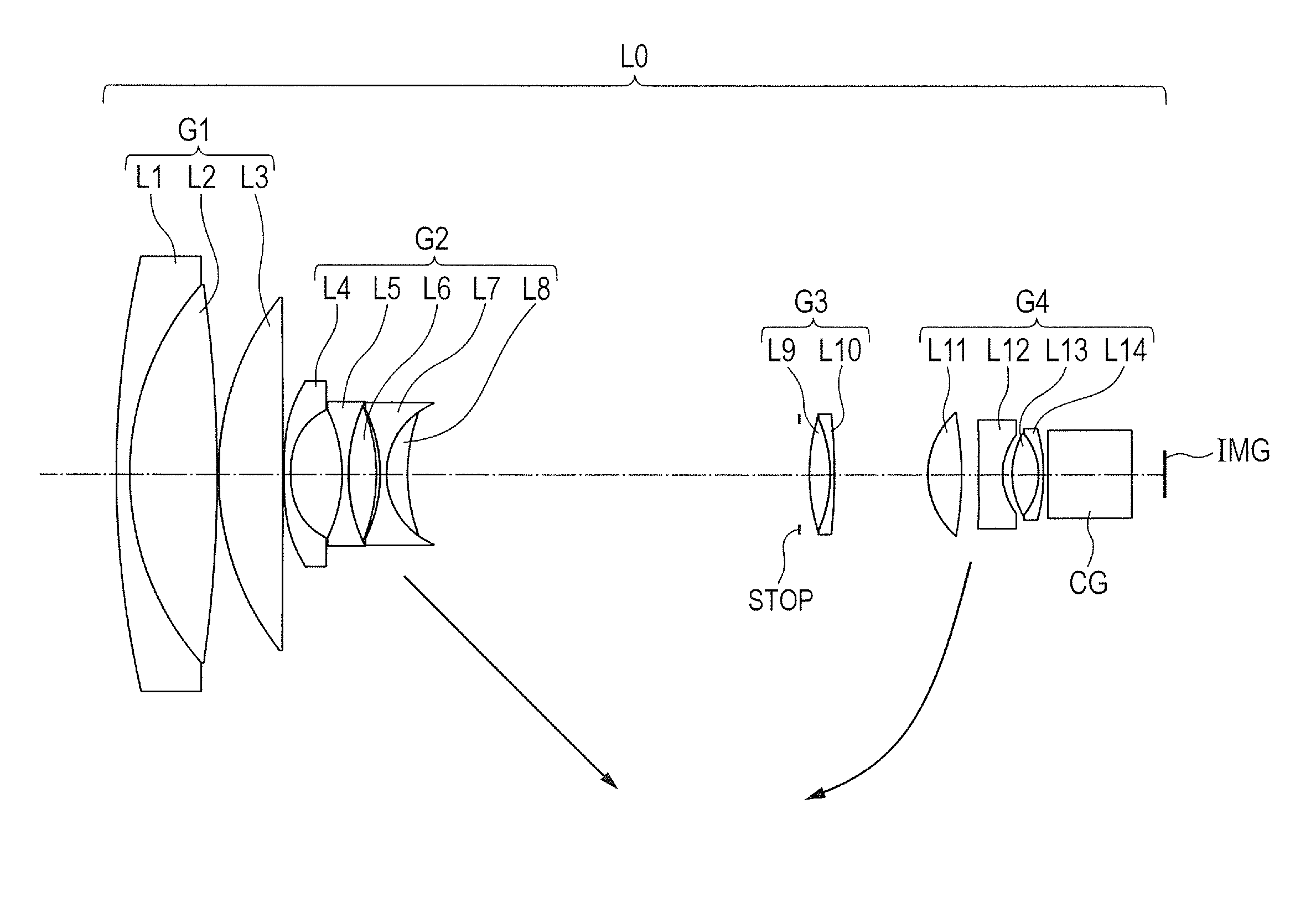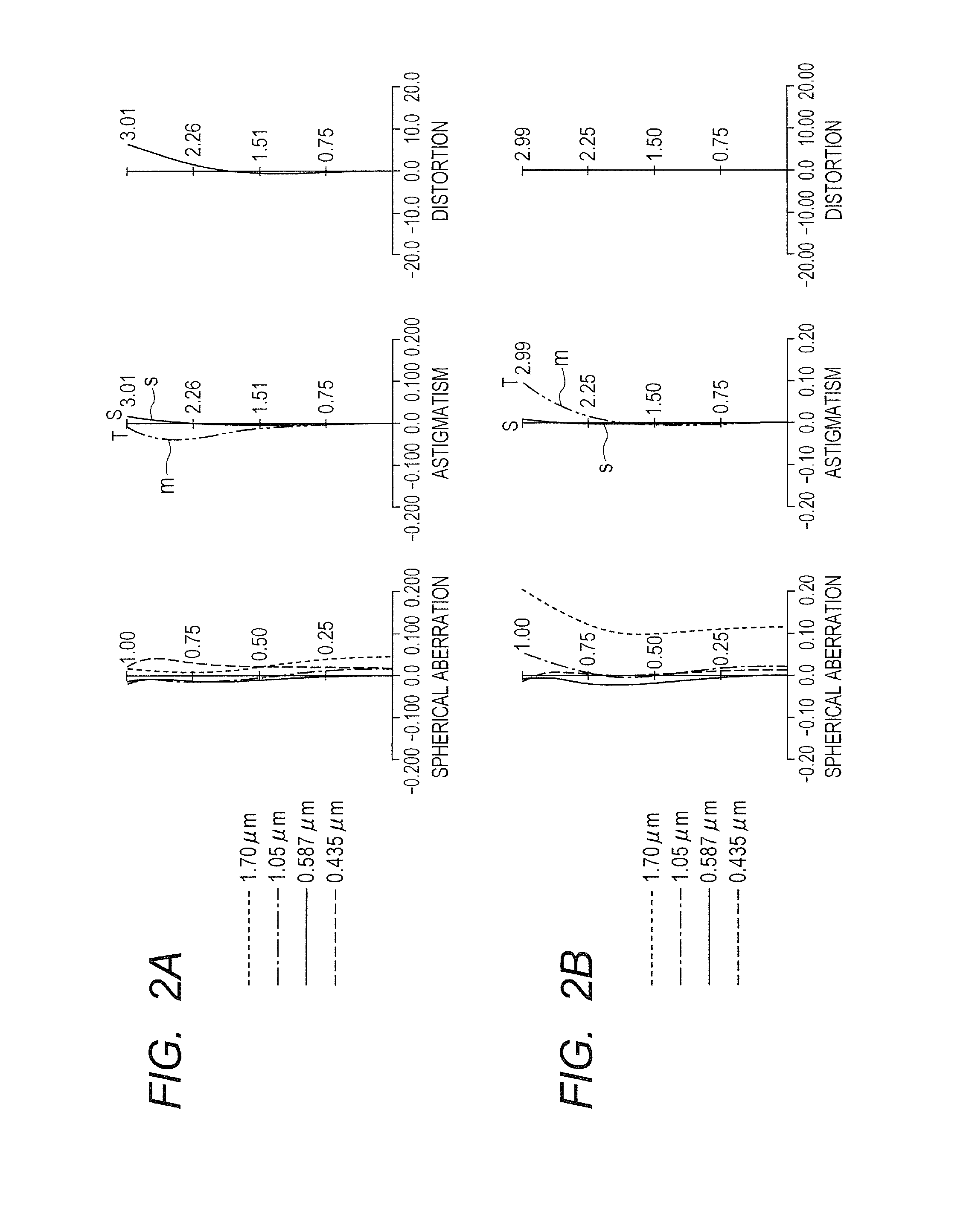Zoom lens and image pickup apparatus including the same
- Summary
- Abstract
- Description
- Claims
- Application Information
AI Technical Summary
Benefits of technology
Problems solved by technology
Method used
Image
Examples
example 1
[0069]The structure of the zoom lens of Example 1 is described. The zoom lens of Example 1 includes the first lens unit G1 having a positive refractive power, the second lens unit G2 having a negative refractive power, the aperture stop STOP that determines a predetermined aperture, the third lens unit G3 having a positive refractive power, and the fourth lens unit G4 having a positive refractive power. The optical block CG is arranged between the fourth lens unit G4 and the image plane IMG. If this optical block CG is not necessary, the optical block CG can be omitted. In the following, an i-th lens counted in order from the object side to the image side is represented by Li.
[0070]The first lens unit G1 includes a lens L1 having a negative refractive power (hereinafter referred to as “negative lens”), a lens L2 having a positive refractive power (hereinafter referred to as “positive lens”), and a lens L3 having a positive refractive power, and the negative lens L1 and the positive ...
example 2
[0073]The structure of the zoom lens of Example 2 is described. Example 2 is the same as Example 1 in signs of the refractive powers of the respective lens units, movement of the respective lens units during zooming, and the like.
[0074]The first lens unit G1 includes a negative lens L1, a positive lens L2, a negative lens L3, a positive lens L4, and a positive lens L5. The negative lens L1 and the positive lens L2 are cemented, and the negative lens L3 and the positive lens L4 are cemented. The second lens unit G2 includes a negative lens L6, a negative lens L7, a positive lens L8, a negative lens L9, and a positive lens L10. The negative lens L7 and the positive lens L8 are cemented, and the negative lens L9 and the positive lens L10 are cemented. Aspherical surfaces are used for both surfaces of the negative lens L6.
[0075]The third lens unit G3 includes a positive lens L11 and a negative lens L12. The positive lens L11 and the negative lens L12 are cemented. The fourth lens unit G...
example 3
[0076]The structure of the zoom lens of Example 3 is described. The zoom lens of Example 3 includes the first lens unit G1 having a positive refractive power, the second lens unit G2 having a negative refractive power, the aperture stop STOP that determines a predetermined aperture, and the third lens unit G3 having a positive refractive power. The optical block CG is arranged between the third lens unit G3 and the image plane IMG. If this optical block CG is not necessary, the optical block CG can be omitted.
[0077]The first lens unit G1 includes a negative lens L1, a positive lens L2, a negative lens L3, a positive lens L4, and a positive lens L5. The negative lens L1 and the positive lens L2 are cemented, and the negative lens L3 and the positive lens L4 are cemented. The second lens unit G2 includes a negative lens L6, a negative lens L7, a positive lens L8, a negative lens L9, and a positive lens L10. The negative lens L7 and the positive lens L8 are cemented, and the negative l...
PUM
 Login to view more
Login to view more Abstract
Description
Claims
Application Information
 Login to view more
Login to view more - R&D Engineer
- R&D Manager
- IP Professional
- Industry Leading Data Capabilities
- Powerful AI technology
- Patent DNA Extraction
Browse by: Latest US Patents, China's latest patents, Technical Efficacy Thesaurus, Application Domain, Technology Topic.
© 2024 PatSnap. All rights reserved.Legal|Privacy policy|Modern Slavery Act Transparency Statement|Sitemap



